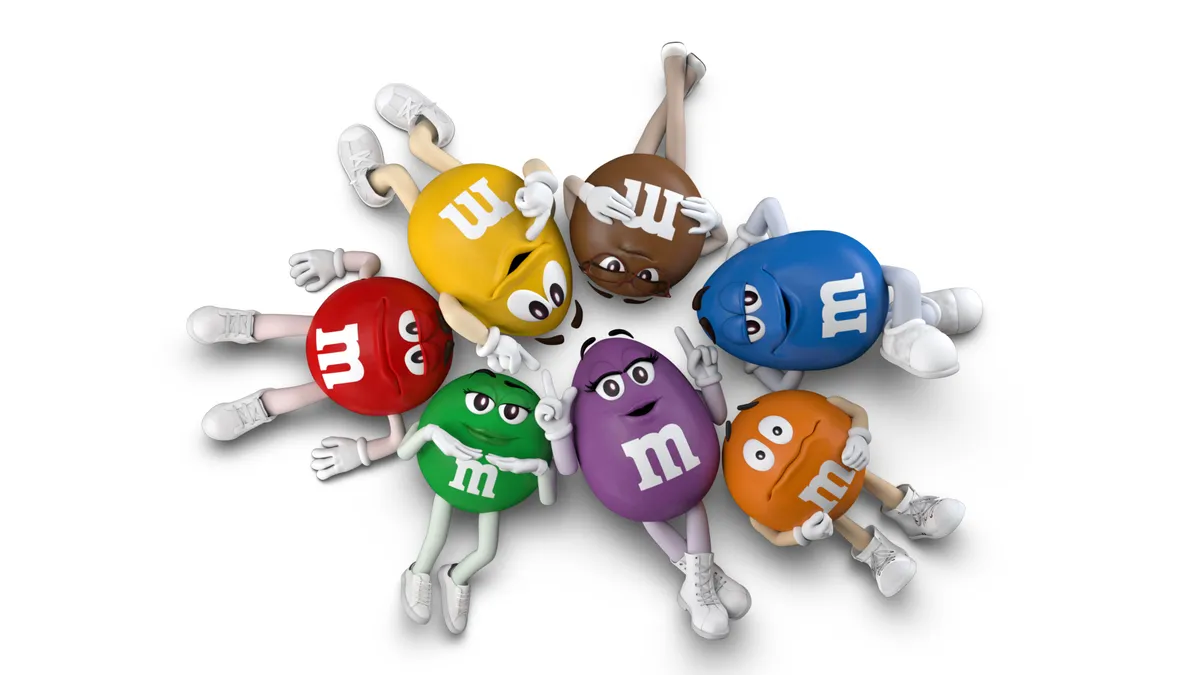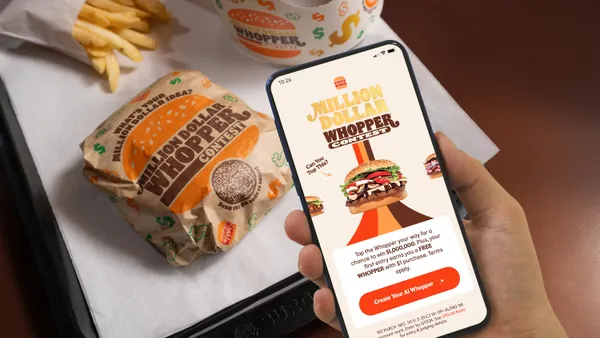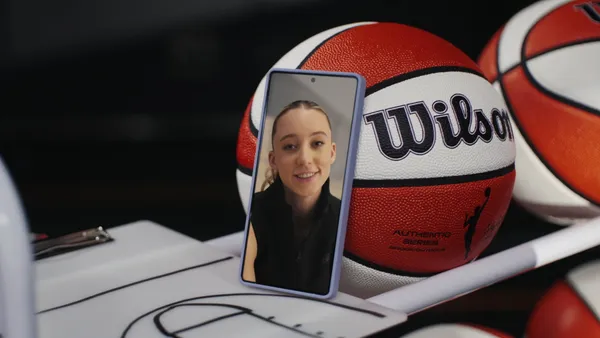M&M's today (Sept. 28) expanded its crew of characters with the introduction of Purple, a female, peanut M&M "spokescandy." The addition to its roster of mascots is the first in a decade and follows a controversial purpose-driven rebranding that drove impressions and brand sentiment.
"We're really excited about Purple because she's designed to represent acceptance and inclusivity," Jessica Adelman, vice president for corporate affairs and head of global communications at Mars Wrigley, told Marketing Dive. "We want her to be known for her earnest self-expression, keen self-awareness, authenticity and competence."
To mark the debut, the brand will release a song and video, "I'm Just Gonna Be Me," that features saxophonist Grace Kelly, choreographer-dancers Devin Santiago and Colo Cag, opera singer Anthony Roth Costanzo, and the rest of the cast of M&M's spokescandies. The character was launched in collaboration with agencies BBDO, Mediacom and Weber.
The song will be available on all major streaming platforms, and M&M's will donate $1 for every stream of the song (up to $500,000) to arts nonprofit Sing for Hope. The effort follows a recent collaboration with Lil Nas X that will see the brand donate $5 (up to $100,000) to the same charity for every purchase of M&M's packs inspired by the pop star. The charitable angle is part of the brand's larger purpose-driven efforts, which were at the center of the January refresh.
"Having a purpose is what gives you the conviction to stick to what's true to you. We really wanted to think about how are we making sure that we're bringing people together and we're connecting people," said Adelman. "We think a lot about acts, not only ads."
A controversial brand refresh
Sticking with what's true to the brand is especially important after the brand refresh received plenty of attention from the marketing industry and consumers at-large in January. As part of the "For All Funkind" platform, M&M's candies received modernized makeovers that drew out the characters' "nuanced personalities" — a purpose-driven move that quickly became fodder for online satire and memes. M&M's took the controversy in stride.
"We were thrilled to a large extent because it reminded us how iconic our brands are — that people care so deeply about M&M's and the characters," Adelman explained.
M&M's shared data that suggests the brand refresh served its purpose, from a marketing standpoint. In January, the announcement drove more than 10 billion earned media impressions around the world. The refresh also earned 4.56 billion impressions on Twitter with brand search impressions on Google up 160% when compared to the brand's Super Bowl launch in Q1 2021. Plus, three in four Gen Zers surveyed by Morning Consult said they were aware of M&M’s new purpose, with 48% saying they heard positive buzz about the brand.
"People are always going to have reactions — it means you're relevant, it means you're in the conversation — and having a purpose helps you to really be clear and true about what motivates you and what your reason to be in the consumer space is," Adelman said.















